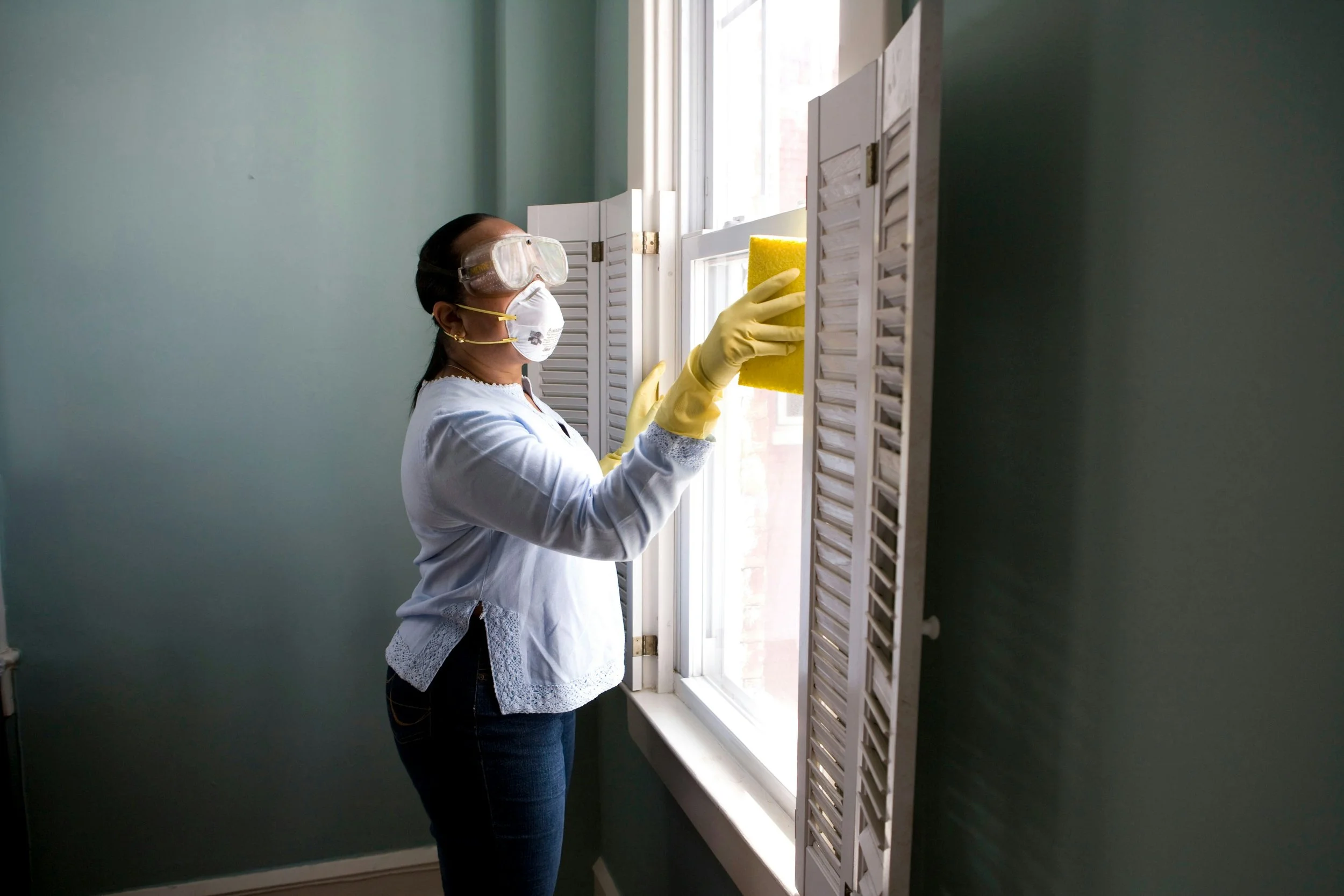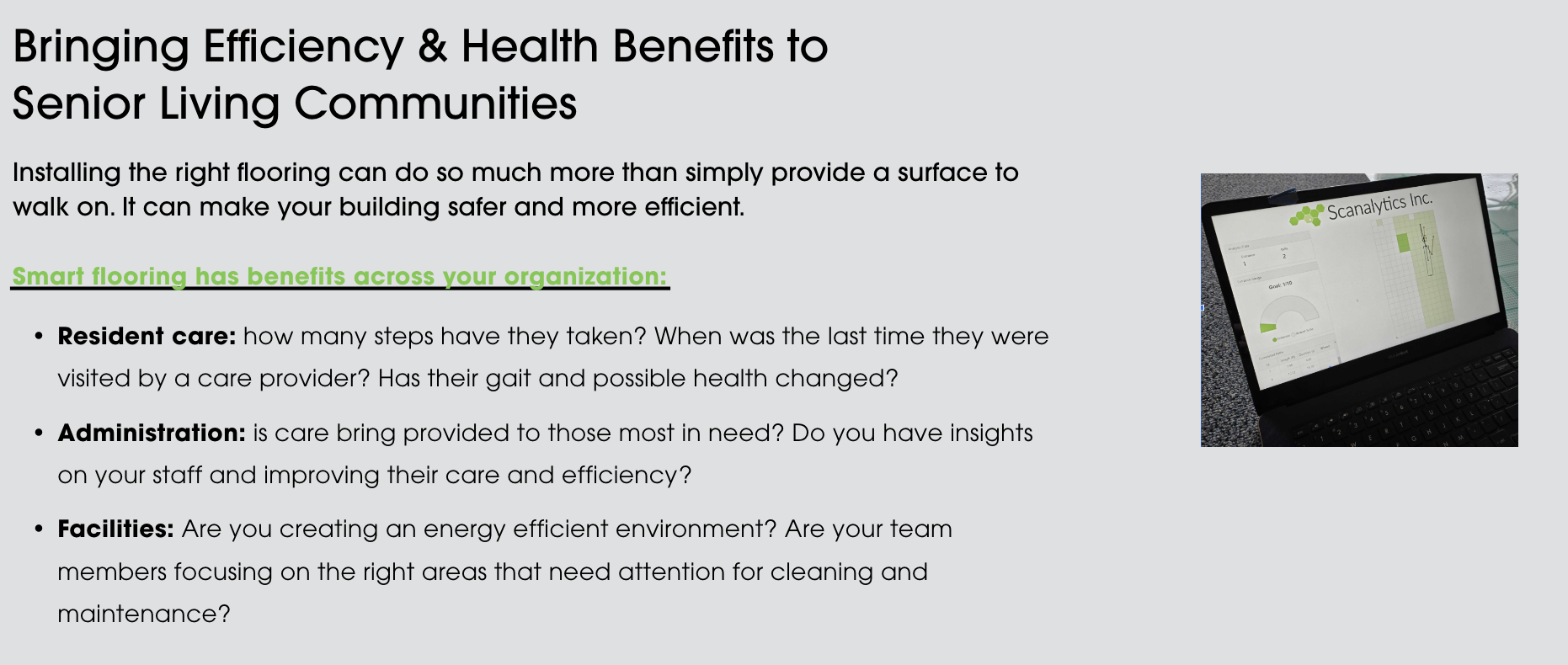The Benefits of Smart Flooring for Senior Living
As technology continues to revolutionize nearly every aspect of our lives, one area seeing tremendous innovation is senior living facilities. With an aging population that desires independence but often requires additional care, finding ways to enhance comfort and safety is critical. Smart flooring is one of these technological advances that has the potential to make a real difference in senior living environments. By embedding sensors and advanced tracking systems directly into the flooring, smart flooring offers a wide range of benefits, from improving health outcomes to optimizing facility management.
The ultimate measurement of smart flooring: Better Health Outcomes
1. Enhanced Health Outcomes
One of the most significant advantages of smart flooring in senior living is its potential to improve health outcomes. Falls are the leading cause of injury and hospitalization among seniors, and detecting these incidents quickly can be life-saving. Smart flooring systems are equipped with sensors that can detect falls immediately, automatically alerting staff to respond quickly. This rapid response can significantly reduce the severity of injuries and improve recovery times for seniors.
Moreover, these flooring systems can track subtle changes in a resident’s gait or walking patterns over time. Research has shown that changes in gait can be early indicators of health issues such as Parkinson's disease, dementia, or balance disorders. Smart flooring can help monitor these changes, enabling early detection and intervention, potentially preventing serious health declines.
2. Improved Facility Management
Smart flooring isn't just beneficial for the residents—it also provides major advantages for the overall management of the facility. By integrating smart flooring systems into daily operations, facility managers can automate a range of tasks that previously required manual monitoring. The video above showcases the dashboard enabled by smart flooring data inputs. There are manyuse cases for smart flooring for senior living: resident movement, staff presence, better balanced check-out times and room-turns, and other facilities management services.
For instance, smart floors can track the movement of both residents and staff throughout the facility. By analyzing this data, facility managers can identify areas that are used more frequently and require more attention, optimizing the allocation of cleaning and maintenance resources. In some cases, this technology can even help regulate energy usage by monitoring the occupancy of rooms, allowing for better climate control and lighting systems that operate based on room occupancy .
3. Personnel Monitoring and Efficiency
In senior living environments, the staff is often stretched thin, particularly in large facilities with many residents. Smart flooring systems offer an innovative solution to this problem by helping personnel be more efficient and effective in their roles. These floors can automatically log when staff members enter and exit rooms, allowing management to ensure that residents receive the care and attention they need without overburdening the team. This system can reduce unnecessary foot traffic in less critical areas while increasing staff presence where it's needed most.
Additionally, smart floors can help monitor the location of staff in real-time, which is especially useful in emergency situations. If a resident requires urgent assistance, the system can instantly identify the nearest available staff member, ensuring the fastest possible response time.
4. Boosted Resident Mobility and Independence
Maintaining a sense of independence is essential for seniors’ well-being, both physically and emotionally. Smart flooring contributes to this by enhancing residents' mobility and confidence. Because the flooring can detect falls and other issues, residents may feel more secure moving around the facility, knowing that help is available should they need it.
For those who might be at higher risk of falling, smart flooring can help track their movements in real-time, sending alerts if there is abnormal or risky behavior, such as wandering into unsafe areas. In cases where residents suffer from memory loss or cognitive impairments, this feature becomes especially valuable, allowing staff to monitor their movements without constantly shadowing them, preserving the residents' dignity and sense of freedom .
Moreover, smart flooring systems can be integrated with other assistive technologies, such as wearable devices and smart home systems, to provide comprehensive care. For example, smart flooring can trigger automatic lighting when a resident gets out of bed at night, reducing the risk of tripping and falling in low-light conditions. Smart flooring is by nature, anonymous and private, so while it provides insights, it’s not a constant reminder of “being monitored” for greater emotional independence.
5. Optimized Cleaning and Work Schedules
Managing a senior living facility requires meticulous attention to cleanliness and sanitation, especially in light of recent health concerns. Smart flooring systems can help optimize cleaning schedules by detecting foot traffic and usage patterns across different areas of the facility. This data allows housekeeping teams to focus their efforts on the areas that need the most attention, rather than following a rigid, predetermined cleaning schedule.
For example, if the dining area experiences heavy traffic at certain times of the day, smart floors can alert the cleaning staff to this pattern, ensuring that the area is cleaned more frequently during peak usage times. Conversely, areas that are used less frequently may not need to be cleaned as often, which saves both time and resources. This level of precision in cleaning helps maintain a high standard of cleanliness and hygiene, reducing the spread of illness among residents and staff. This type of adjustment can be measured in time savings and cost decreases.
6. Data-Driven Insights for Continuous Improvement
One of the most powerful aspects of smart flooring systems is their ability to collect and analyze data. Over time, these systems build up a wealth of information on everything from resident activity levels to staff efficiency. Facility managers can use this data to make informed decisions about improvements to both care and operations.
For instance, if the data reveals that residents are spending less time in certain common areas, it might indicate that these areas are becoming less accessible or comfortable for them. This insight can prompt changes, such as rearranging furniture or improving lighting, to make these spaces more inviting and usable. On the other hand, if certain staff members are consistently responding faster to emergencies, that information can be used for training purposes to help others improve.
Data analytics from smart flooring also plays a role in ensuring compliance with health and safety regulations. By tracking every aspect of a facility’s operation, management can ensure that they are meeting required standards, while also identifying areas where improvements could be made.
7. Cost Efficiency and Sustainability
While the initial adoption of smart flooring technology is inexpensive, it is a new approach and involves installation and management, like any new system. However, the long-term cost benefits are significant. By optimizing cleaning schedules, improving staff efficiency, and reducing the risk of costly health incidents (such as falls), facilities can save money over time. Furthermore, the ability to monitor energy usage and make adjustments based on occupancy leads to reduced utility costs.
Sustainability is an increasingly important factor for many facilities, and smart flooring systems help in this area as well. By integrating with energy-efficient building systems, smart flooring can contribute to a facility’s overall sustainability goals, helping to reduce its carbon footprint and environmental impact.
Conclusion
Smart flooring represents an exciting advancement in the field of senior living. Its benefits are multifaceted, offering improved health outcomes, greater operational efficiency, enhanced mobility and independence for residents, and optimized management of both personnel and facility resources. As the technology continues to evolve, it is likely that even more innovative applications of smart flooring will emerge, making senior living environments safer, healthier, and more enjoyable for everyone involved.
Embracing smart flooring technology isn't just about keeping up with trends—it's about delivering better care and creating a safer, more supportive environment for seniors and their loved ones to thrive.
Sources:
Health Impacts of Fall Prevention Technologies in Senior Care
Improving Senior Living Operations with Smart Technology
Data-Driven Solutions for Aging Populations
The Role of Wearables and Smart Floors in Gait Analysis
Optimizing Facility Management with Smart Systems







